10 Amazing Treasure Hunts Games to do with kids
The treasure hunt, in its infinite variations, involves the baby of every age in an experience of discovery, commitment and cheerful sharing with others. Here are ten versions of simple and fun treasure hunts that will make the time spent with children unique.
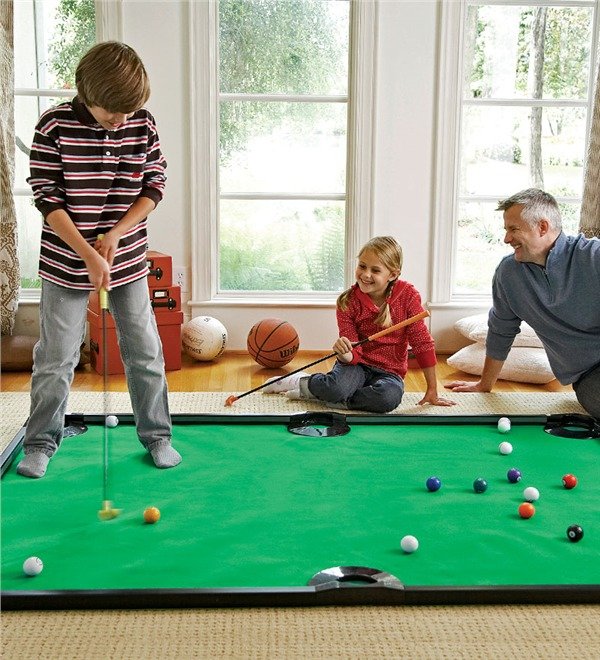
Treasure hunts are classic game that involves children of (almost) every age in an experience of discovery, commitment and cheerful sharing with others. The only essential precaution to turn a rainy afternoon into a special event is not overdoing it. A game mechanism that is too complex, long and very rigid would risk boring players, especially the little ones. So, look at age and always keep in mind a rule: simplicity , often, really 'captures' children
Credits
Hunt for singing
The protagonist of this hunt is music: it is necessary, therefore, to put together a beautiful compilation of 10 songs (among the most famous, known to all children in this age group, like Balloon blue , Star star, I two unicorns ... ). For convenience, you can put them on a CD ready for use or, if you love singing, you can make the 'juke-box' living!
The organization
Equipped with the 'seekers' of a whistle, a bell, a trumpet ... In short, something quite loud enough to 'reserve' for the answer.
As for the treasure, to remain on the musical theme, hide well a small instrument that will be, then, the prize for the winner.
Think about the directions to be given to individual players at each stop and, if you want, take notes, or improvised at the moment. What matters is to pass the musical test to proceed towards the treasure.
How to play
The mechanism of this hunt is simple and engaging: to approach the treasure, it is necessary to guess and hum the little song you propose. At that point, those who guess, receive the directions to proceed.
With a small group of friends (maximum 4-5), the challenge can be a lot of fun.
At the start, start the cd with the song number 1 and stop it suddenly: those who 'book' first with the whistle, earn the right to guess the song and hum.
At this point, if the musical test is over, say aloud to the child where to go (' Take 3 steps to the right!' ), While the other children must stay where they are. In the case, everyone played together to sing, the idea of counting is always worth to avoid bad moods.
When the piece number 2 starts, everything is repeated: try, however, to make sure that all the players have the opportunity to sing and move towards the treasure ... In any case, someone will have the advantage and will receive more instructions, but involve everyone, anyway.
And at the end, reward the whole group with colored rosettes or a sweet treat.
.jpg)
Fire Fighting
Fire fighting is the simplest version of hunting, an 'old' classic, suitable for younger children (from 3 years) that, generation after generation, never ceases to amuse! Perfect to cheer two bored siblings or a couple of little friends . But it also lends itself to a moment of leisure between parent and child.
The Organization
Just hide 4-5 items in different rooms of the house to play with some children or alone with the child in a variant of the classic game. Then you need a watch to check the times established for each search.
How to play
The aim of hunting is to find the hidden object in each room following the indications of the adult. Explain to the players (or your little one) that you have hidden, for example, 5 items in different rooms of the house and they must find the largest number possible with your help. But you can search for each object within a time limit (like a couple of minutes), then switch to another search.
It starts, for example, from the kitchen: if the child moves away from the hiding place, say 'Water, water!', When it is approaching, emphasizing a bit ', exclaim' Fight ' to indicate that the object is handy.
If in the fixed time, no one finds the object of that room, we move on to the next one.
The winner? Who managed to find the highest number of objects hidden in the different rooms.

Credits
'Blue Things' Hunting
This hunt is suitable for younger children , around 4-5 years old, who get tired easily if a game becomes too long and complicated. A more 'free' and simple approach, however, with few rules, as in this case, can have a lot of fun ...
It is suitable for two teams or, if the children are few (type 4-5), it is fine in single player mode, in any case with an adult 'captain'.
The Organization
The preparation of this hunt is fast enough for mom and dad . Just choose a dozen blue objects of various nature (t-shirt, plush, cutlery with the blue handle, towel, mug, marker, bag, cover ...) and arrange them around the house, camouflaging them a bit 'but not too much.
For each blue thing chosen above, draw (or glue parts of photos, print images with the PC ...) on a sheet some clues useful to identify it. If, for example, the object in question is a cutlery, an idea could be that of sticking the image of a steaming plate and a hand on the stick ... In short, free way to the imagination but try to be clear and very simple!
In this way, even children who do not know how to read can manage the information necessary for hunting on their own (or within their team).
Depending on the number of single players or the two teams, remember to make a sufficient amount of the same tickets for all (10 items and 5 children, for example, 50, for two teams, however, 20 are enough, ie 10 team) .
Then, an alarm clock, maybe the old ones that tick, is the perfect ally to time the game.
How to play
The aim of the game is to find the greatest number of 'mysterious blue things' as quickly as possible . Set a minimum time for the search, for example, 15-20 minutes and maximum (30-35 minutes), so no one will get bored or complain that they did not have enough time to find blue things.
Before kick-off, the adult must deliver the tickets to the players (or teams), explaining aloud the images-clues if necessary, and the purpose of the hunt (for each ticket find the blue object).
At the start of the stopwatch, every child (or group) must look for 'blue' things, scattered throughout the house, but in logical places according to their function (such as the blue cover in the bedroom).
On the contrary, a possible variant for older children (aged 6 years) is to hide the blue objects or place them in places that are a bit strange for their use (a cutlery in the bathroom!).
In the end, the winner is the one who has found the most blue things in the shortest time (once the minimum is fixed) ... The prize? A shimmering gum for the fastest hunter!
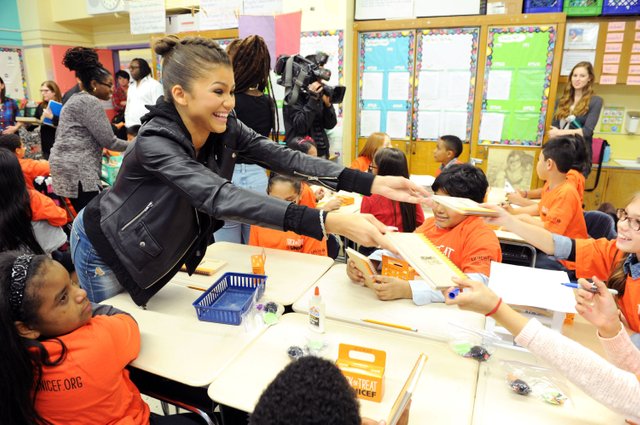
Hunt for lists!
The hunt for lists is simple and nice and calls into question spirit of observation and speed.
A simple and friendly hunting that calls into mind spirit of observation and speed, suitable for children of the first grades of primary school. Perfect to do at home , with a small group, in pairs or teams, on a rainy afternoon!
Organization
The preparation of this hunt is fast enough even for mom and dad!
It is necessary to draw up a list of a dozen objects (funny or a little bizarre according to the age of the children) that the players will have to find around the house in a fixed time. In short, free way to fantasy!
Here, some examples:
- a green plastic object
- something that starts with Q
- a shiny thing
- something thin that stretches
- something white and soft like snow
- something fragrant
- a pink thing
- something that melts
- a broken thing
- something to wear around your neck
Of course, obtain copies of the list sufficient for the number of 'seekers' (if you are single, one for a child, or one for a couple or a team).
To do a little bit of a scene, if possible, use an old alarm clock to time the chase, alternatively, you can also put together a 15-20 minute music compilation and use it to mark the time of the hunt. But even a classic watch is fine!
How to play
Give the players the lists and start the hunt, starting to time.
The aim is to find as many objects as possible listed in the list within the established time. The winner is those who find them faster (therefore, before the final gong) or, at the same time, wins the team that has found more objects.
Credits
Dinosaur Treasure Hunt
Among guided research and quizzes, here is a hunt for those children of the last year of the nursery school or the first classes of the primary, which go crazy for the dinosaurs ... And, often, they are able to amaze (or put directly into cross!) mum and dad with their knowledge on the subject. It is designed for two teams with the presence of an adult-guide.
The Organization
First, get yourself a certain number of dinosaurs (from 5 to 10 depending on how long you want to keep hunting), the plastic ones that many children collect are fine. Alternatively, get yourself a series of large and clear images, and glue them on cards.
Warning! Worry to know the name of the prehistoric animals chosen and the main habits of each to ask some questions-quizzes at the appropriate time.
At this point, arrange them around the house.
For each little animal, then, prepare a 'graphic' map, easy and intuitive for the little ones (no need to be architects!) With drawings, arrows to indicate the direction and symbols (like a foot) for the number of steps . At the beginning of the hunt, then, the maps (equal) will be delivered to the two teams (so, for example, 5 dinosaurs = 5 + 5 equal maps for each team).
If, for example, the animal number 1 is hidden in the kitchen, draw your home (clearly and with some element that immediately makes each room recognizable) and create a path that leads there.
The starting point, you can mark it on the map with a red flag or communicate it directly to the teams. Obviously, highlight well the place where the dinosaur is hidden with another symbol (star, heart, flag of another color ...).
How to play
Upon departure, the 'captain' delivers the 1-sheet-map (2 identical sheets, one per team) to both teams and kicks off.
The initial goal is to follow the path, finding the dinosaur before the opposing group. Who beats the rival team, scores 2 points and can launch to identify the prehistoric creature name (1 point) in a timed time (like 30 seconds). In case, the answer was wrong or nothing in the expected time, the other team gains the chance to say his.
The idea, therefore, is to assign a score to each group based on the ability to 'decipher' the map quickly and then identify the prehistoric animal. If the two teams arrive simultaneously to the place where the dinosaur is hidden, both make 1 point (and not 2). In this case, a classical count establishes who is responsible for guessing the name of the creature (always in 30 seconds), thus winning another point.
Basically, in a schematic way, the score could be like that (but you can change it the way you want!):
- the team that first finds the dinosaur: 2 points; (who arrives second: 0 points)
- the two teams arrive together with the hiding place: 1 point (each one)
- who guesses the right name of the dinosaur: 1 point
Naturally, the game mechanism is the same for every map. Attention, to keep well the score of the teams, maybe on a blackboard or on a sheet hanging on the wall.
In the end, if the situation between the two teams is almost on the same level, it is possible to propose some extra questions for the play-off on the dinosaurs found.
Invite the two teams to sit silently, facing each other. Then, take, for example, the triceratops and ask, based on the age (and the concentration of the 'seekers'), something quite simple, like:
What did he eat?
What was his horns for?
The foreman who raises his hand first and answers correctly wins and scores. Depending on how much you want to make the play-off last, you can assign the final victory to a team even with only 2 extra questions or double (on two different dinosaurs).
The highest final score decrees to those with the title of expert paleontologists! Award and, if you want, a mini dinosaur each, for the whole team!
Credits
Treasure Hunt 'gymnastics'
Here is a hunt that requires attention , speed and 'athletic' ability: after all, even at home, a bit of movement adds fun to the challenge. It is suitable for a group of school-age children with varying ages depending on the difficulty of maps and tests under the guidance of an adult-captain.
The Organization
First of all, you need to create a certain number of maps (for convenience, number them) to reach each hiding place up to that of the treasure. In principle, 5 points are more than enough at home. So, draw a route with the necessary directions to get to each chosen place until the last one that leads to the treasure and then make copies to get the same number of maps for all players.
Think of a series of movement tests for each 'stage': if the places defined, for example, are 5, it means that you will have to create 5.
Here are some ideas:
Try 1 - make 4 hops on the rope.
Try 2 - throw a balloon (light rubber ones) up and turn around and pick it up.
Try 3 - walk, one foot in front of the other, on a strip of paper (about one inch wide) without losing your balance.
Try 4 - repeat in sequence a series of dance steps that you will show only once.
Try 5 - roll the ball 4 times against the wall by clapping your hands.
Do not forget to hide the treasure in the last place and, given the 'fatigue' of this hunt, a bag or a box of chocolates could be fine!
To time the total time of the hunt (about 20-30 minutes) and that of the first stage (3-4 minutes), equip yourself with a clock or an alarm clock.
How to play
Before starting the hunt, give all the players the map number 1 that indicates the first place to be reached in a limited time (you can adjust according to the age of the children and the difficulty of the itinerary).
At the stop, everyone stops (even those who did not get close to point number 1), and the fastest player has the right to test himself first in test 1.
If it goes over it can continue, otherwise it must return to the starting point by following the same path backwards on the map. According to the order in which they arrived at this first stage, the other 'seekers' are also called to compete with the same test. Who does not reach the point and does not pass the test, does not win the second ticket.
After passing test 1, each child moves to the second stage where a new trial awaits him. Also in this case, whoever arrives first can immediately execute the challenge and, if he makes a mistake, he must return to the previous point.
The mechanism repeats itself in the same way, between maps, stops and tests, until someone reaches the final place, that of the treasure. If this happens before the end of the hunt, the absolute winner is immediately named, otherwise he expects the end of the set time to see who will conquer the treasure.

Credits
Card Hunt
Research, speed and concentration are the ingredients of this hunt, ideal for entertaining a small group of school-age children (from the second class onwards), at home, on a winter afternoon.
The Organization
Prepare a good number of colored cards by writing on each one a nice letter of the alphabet in block letters and then, hide them around the house.
Have an alarm clock or a clock to time the time of the hunt (set a duration of 15-20 minutes, depending on the age of the participants and their reactions) and a billboard or blackboard where to score the score of each single player.
How to Play
Upon departure, all players must run around the house and look for as many cards as possible. After a few minutes, say, a little 'blatant', 'Stooop!' and the children are called to quickly compose words with the letters they found.
Set a score for each word, like:
1 point = 3 letter word
2 points = 4 letter word
3 points = word of 5 letters
4 points = word of 6 letters
Count how much each player scored, mark it on the board or the board and resume the hunt ... Once again, invite the children to stop the search and compose new words with the cards found.
At the end, check the total score of each child and name the winner who wins a thematic award: it could be a bag with a funny pencil and a rubber.
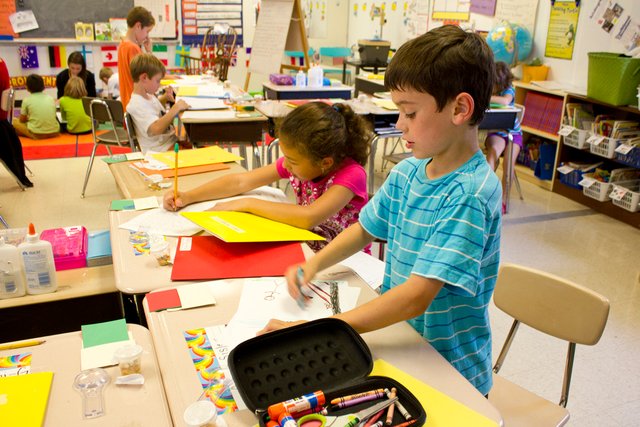
Credits
Points Treasure Hunt
Speed, attention and intuition are the three main aspects that this hunt helps to 'train' in a fun way. Suitable for a group of children of the first years of the primary under the guidance of an adult who reads, with each hand, the messages.
The Organization
First, it is essential to know the exact number of players : if the children invited to hunt, for example, are 6, prepare 6 cards numbered from 1 to 6 and with an acronym (which will be different for each hiding place).
Attention : In each hiding place, you need to put 6 cards (therefore, if the places to be discovered are 5 will need 30 numbered sheets and with different initials.
For each 'secret' place, invent a message that you will read aloud, at each new stage in the heats, in the 'seekers'. Of course, based on the age of the children, try to design a track or a riddle (even in rhyme) that is not too difficult and does not cause intolerance towards the game.
Here are some ideas, for example:
Hiding number 1 - inside a shoe
Message
At the feet you carry them,
every day you go out!
Hiding number 2 - pillow
Message
When it's evening and you're tired,
put your cheek on it,
even if you do not talk about sleep!
Hiding number 3 - oven in the kitchen
Message
It's your ally in the kitchen
for the sweet breakfast you would like every morning!
Hiding number 4 - laundry basket
Message
In the pee room,
what is dirty I bring it and put it there!
Hiding number 5 - Refrigerator
Message
Always keep cool, keep all food well,
call him a dear friend ...
Remember, then, to get a nice board or blackboard to score the score of each player and a stopwatch to keep track of the times set.
How to Play
After the adult 'captain' has read the first message-riddle, each seeker rushes to find the hiding place. When he reaches it, he must take the card with the highest value (in this case, for example, 6).
The goal is therefore to identify the place (possibly without being followed by rivals), take the sheet with the highest number, leaving the others there as quickly as possible.
For each hunt, set a maximum time, like 3-4 minutes: anyone at the expiration of the minutes available and did not find anything, receives 0 points. For other players, look at the ticket and score the score on the board.
Once everyone has found the first hiding place or the fixed time is over, read the riddle aloud for the search for the second place ... And go on like this (marking the individual score for each search) to the last place secret.
When all the hiding places have been discovered, add the scores of each player and make the classification by rewarding who has conquered the highest one.
Credits
Treasure Hunting for the clue
This classic version with 'cards' is suitable for different age groups (from primary school onwards) depending on the difficulty of the messages. It therefore depends on the organizer to decide for whom it is designed and to design the written tracks accordingly. It is suitable for two small teams with the presence of an adult 'supervisor'.
The Organization
The first step, then, is to choose a treasure (the bag of 'doubloons' of chocolate or sweets, it's always good!) and hide it carefully.
If, for example, you decide to put the clue in the washing machine, write on a small piece of paper, something like:
Turn, turn, and then everything is shining, and for the mother is a powerful ally!
Then, hide the note in another place, for example, in the sugar jar and throw down another track that you bring there!
To the teeth it's a little bad, but for desserts it's an exceptional ingredient!
Once again, find a good hiding place for this message, for example, behind a mirror, and write a new track that allows you to find it, like:
Snow White's stepmother liked to ask him and inquire about how beautiful she was!
Put all the messages together, according to this same logic, and then keep the last piece of paper with the track to start the search. Duplicate the leaflet to deliver it to both teams.
How to Play
At the time of departure, give the sheets with the last track you wrote to the two groups and start the hunt.
If the two teams arrive at the same hiding place at the same time, they have the right to read the hidden card together, continuing the search.
In the case, instead, in which a group reaches it at a later time (the first team that arrives must put the card away on the fly after reading it), must pass a test.
As the fastest team continues the search, the 'second' group is asked to try a first test, for example:
A child, chosen by the team, must recite a tongue twister without errors before resuming the hunt.
Think of 5 spare tests for those who arrive second at each stage of the hunt, but re-propose them equally to each team. To understand each other better: if the group that has won the first ticket faster, has difficulty in 'deciphering' the indications and is exceeded, re-propose to them the first test tongue-twister.
Some ideas for fun and quick tests:
Balance on one foot for 10-15 seconds.
Sing at least one verse of a little song (like Stella star, Balloon blue, Etc).
Walk from one point to another in the room with the arm outstretched holding a spoon with a ping-pong ball on it (without letting it fall, of course!).
The aim of the tests is to slow down, in turn, the teams that are placed in second position for a specific track, of course, in the end, whoever discovers the treasure wins ... And wins the right to eat it!
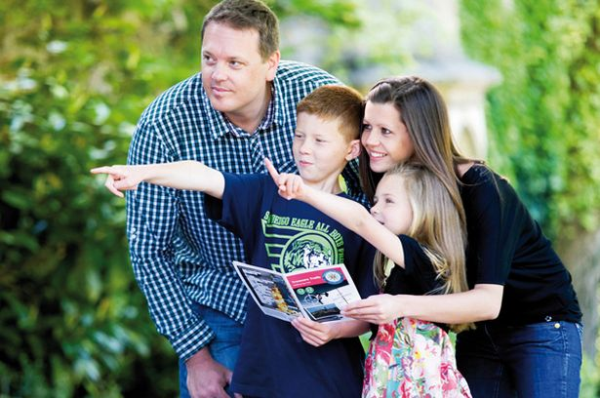
Mixed treasure hunt in 'cartoon' sauce
Between messages and themed quizzes, this hunt is suitable for two groups of primary school children with the presence of an adult. Based on the difficulty of messages and quizzes, the fun world of cartoons can be fine for different ages.
The Organization
First, identify 5 hiding places and then think of 5 messages needed to find them. Use a slightly sibylline style to make hunting more exciting. Something like:
Message 1 - (fridge)
You will find something where food is kept at a low temperature
Message 2 - (library)
Sometimes, it's wood, sometimes not, but it's always full of pages.
Search well among his card guests at the bottom right.
Message 3 - (cookie jar)
With milk or without, there are those who eat them every morning, sometimes even in the afternoon for a
snack. Their place is in the kitchen.
Message 4 - (drawer computer desktop)
It looks like a mute box but it is not ... just access it and allows you to do a lot of things. Search in his 'secret drawer' what there is!
Message 5 - (doormat)
It's not at home but you can step on it every time you enter ... try to look under!
Then, put the messages in the various hiding places in the correct sequence. Get a board or blackboard to mark the points and remember to fix the treasure in the last place.
How to play
On departure, give the first ticket to both teams and give the go.
The group that reaches the first hiding place faster (where the second message is located), scores 1 point. In addition, he wins the right to answer the quiz number 1, still winning 2 points (0 for the other team).
If he is wrong, the rival team can re-launch, having, therefore, the opportunity to improve his score (2 points).
At each hiding place corresponds to the moment of the quiz, only after this passage, the hunt continues towards the next goal (with possible second attempt for the team that arrived later).
Here are some examples of a cartoon- themed quiz :
Quiz 1: What's the name of Peppa Pig's best friend?
Quiz 2: Who is the friend of the heart of Lightning McQueen?
Quiz 3: What are the names and special characteristics of each member of the Barbapapa family?
Quiz 4: How many are and what powers do the Ninja Turtles have?
Quiz 5: Where do the Winx live?
Of course, it is appropriate to adjust the difficulty level of the thematic quizzes based on the age of the players.
The logic of this 'mixed' hunt is to reach the hiding place indicated in the message, answering the quiz and then proceeding to the other stages up to the treasure.
In essence:
- The team that reaches the hiding place more quickly scores 1 point (the other instead 0 points).
The first group answers the quiz: if it is correct it is awarded 2 points (otherwise the rival team tries).
After the 'clash' in the quiz, the hunt continues towards the next stage.
Score the score of each team until the last stage, that of the treasure: in this case, a small figure of Peppa Pig!
Calculate the points and proclaim the winners ... At the same finishing line, it is worth who has scored a higher score.
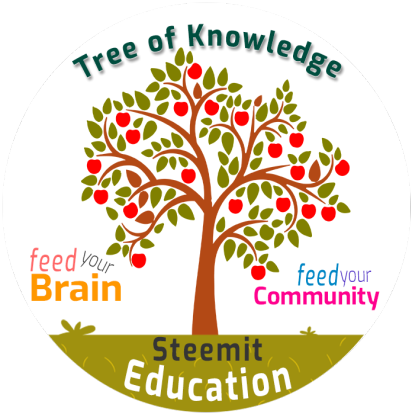
To listen to the audio version of this article click on the play image.

Brought to you by @tts. If you find it useful please consider upvoting this reply.
This post has received a 11.70 % upvote from @booster thanks to: @afifa.
This post has received a 49.94 % upvote from @boomerang.
Wow! That's a massive post with a lot of ideas and hours of play. I'm sure that took you a while to put together. Well done!
Excelentes ideas para jugar con los niños. Éxitos.
I can add to this publication so good that there are no more pleasant moments in this life than enjoying games with your children.
im gonna have to make some kids so i can try this out!lool
great to see you promoting some offline activities! <3